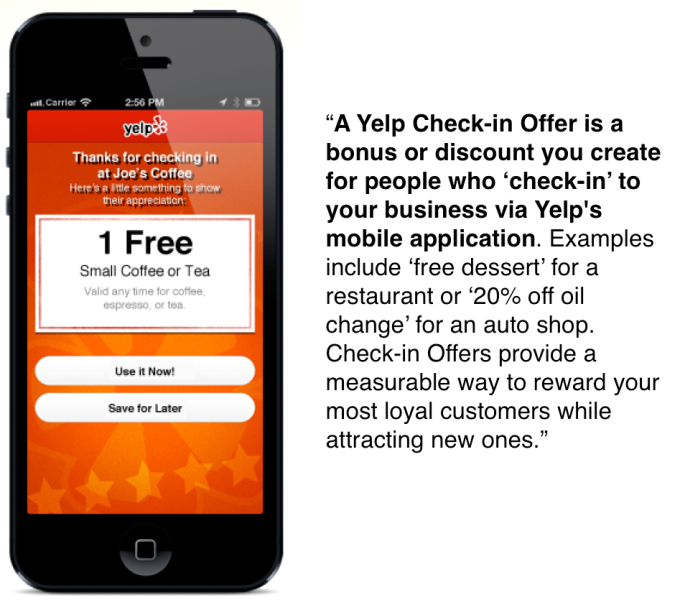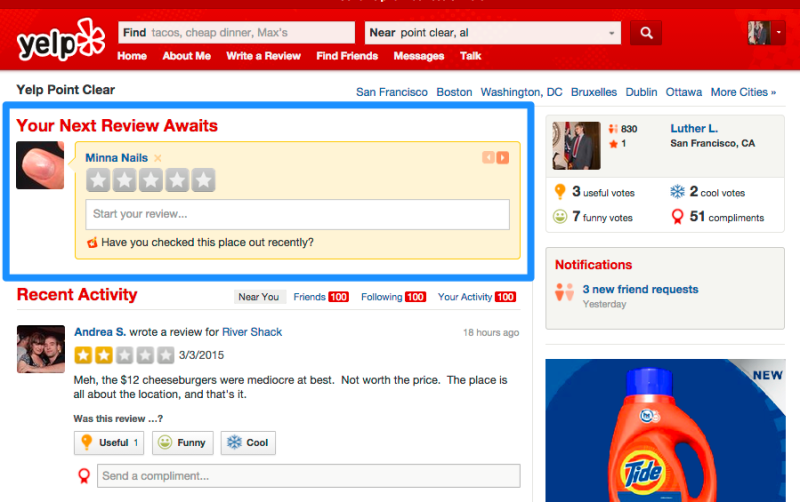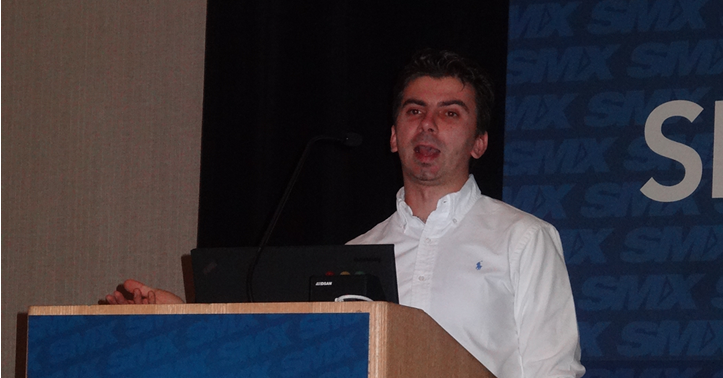Reviews are one of the best tools local businesses have for establishing a reputation and trust within their community. The problem is it can be difficult to convince customers to leave their opinion on Google or Yelp, especially due to Yelp’s strict “no review solicitation policy.”
Yelp’s Luther Lowe gave a tip to help get past this hurdle and start generating reviews at the LSA SMX West Local Search Advantage Workshop.

Source: Marketing Land
Yelp’s policy against review solicitation prevents businesses from asking for positive reviews, though it has not prevented some other creative attempts to gain a positive standing on the site. However, Yelp does allow incentivized check-ins. Obviously check-ins are not reviews, but when users check-in to receive an offer, they are automatically prompted to review that business the next time that return to the site or mobile app.

This system gives businesses a means of encouraging users to leave a review without placing their hands on the scale. The problem with allowing incentivized reviews is obviously that many people would be pushed to give dishonest reviews, but through a pre-review reward users are still free to speak their mind.
From a business matter, this also benefits Yelp because more check-ins equates to more value and usage, but it also gives a valuable place for businesses to lightly nudge customers to help spread the word.

 In the next few weeks, you are likely to lose at least a couple likes on your Facebook Page. It isn’t a sign people are losing interest in your brand however. Facebook has just announced they will stop including likes from memorialized and voluntarily deactivated accounts in the totals for likes on Pages.
In the next few weeks, you are likely to lose at least a couple likes on your Facebook Page. It isn’t a sign people are losing interest in your brand however. Facebook has just announced they will stop including likes from memorialized and voluntarily deactivated accounts in the totals for likes on Pages.




